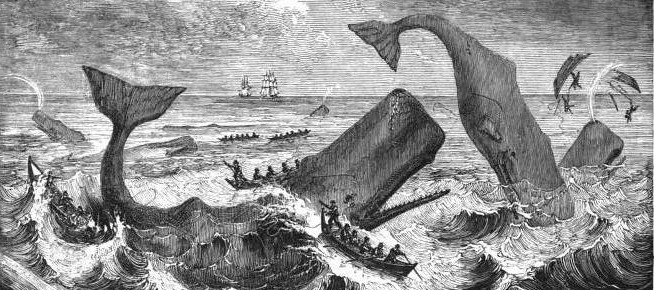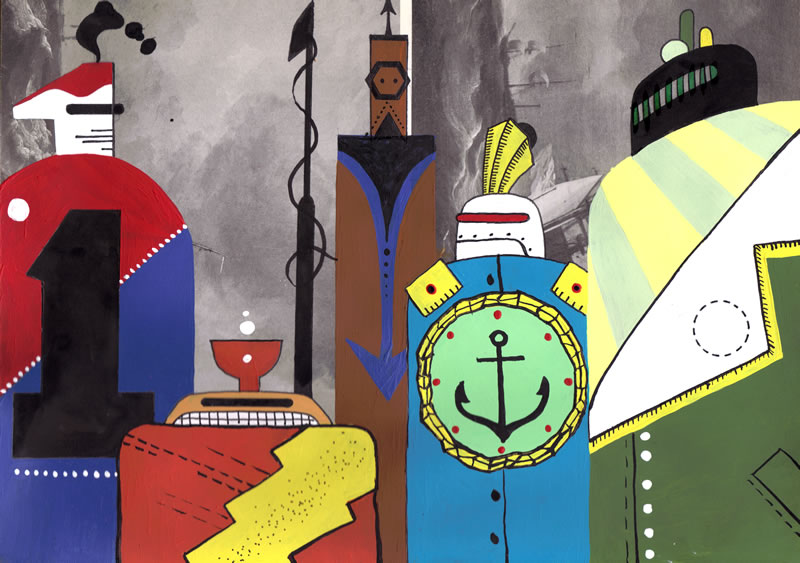I made several declarative promises at the outset of this enterprise to write a page (ish) of creative interpretive commentary for every one of Matt Kish’s iconic page-by-page illustrations of Moby-Dick. That main promise I intend to keep, though I might have to take periodic breaks. I never promised I would do a page a day. I just wanted to try to simulate something of the experience Kish himself must have undergone when he created the illustrations. It’s been a humbling educational experience to say the least, but I am now compelled to make some “corrections” (as Kish sometimes had to make when originally publishing the artwork on his blog) or in my case confessions.
Firstly, I said at the outset that I would only let my references to the text of Moby-Dick be based on recollection (this I said in a sincere effort to keep my focus on Kish’s art), but I had to quickly abandon that bravado when faced with the great difficulty I had developing commentaries on several of the canvases. I’ve repeatedly consulted the text for further contextual detail to support potential commentaries on the illustrations, and in doing so I’ve leaned on it as a crutch. Then, as the text was helping me elucidate perspectives on the illustrations, other canvases were revolutionizing my perspective on several details of the book that I never closely considered. The ideas and associations forged between these two opposing currents of my writing process – the text informing my perspective on a canvas, the canvas transforming my perspective on the text – have been the main fount of inspiration and motivation to continue and to complete this labor, so from here on out I’m looking, looking closely, at the text as well as the illustrations.
Secondly, sometime around Queequeg’s poncho, my bookmark landed in my printed copy of Moby-Dick in Pictures and I started relying on the archive of Kish’s original blog to source images of the illustrations. As a result, divergences between the canvases that were ultimately printed in that book and the ones that originally appeared on the blog have now occurred that are not accounted for in my commentaries. The differences between the illustrations that Kish originally made and the ones he recreated are fascinating to consider, but the rhythmic fluctuations in Kish’s process that led to these recreations or resulted from them have become my own. His “corrections” have made me reconsider how to move forward with my writing: should I rewrite previous commentaries? That prospect seems painful to me: especially in the case of the “MD Aphorism” illustration series (which were for me among the most difficult commentaries to compose), all of which were redrawn by Kish before being published as a book. If I move forward not having rewritten previous commentaries do I just refer to the re-drawings to come as a matter of course, with no acknowledgment that there are others unidentified behind?
Going forward, I will definitely use both the printed version of the illustrations and the originally blogged versions (as well as any other republished recreations of the illustrations Kish put out there) as sources, but there are some decisions I need to make about my own process before I can resume (near) daily publications.









